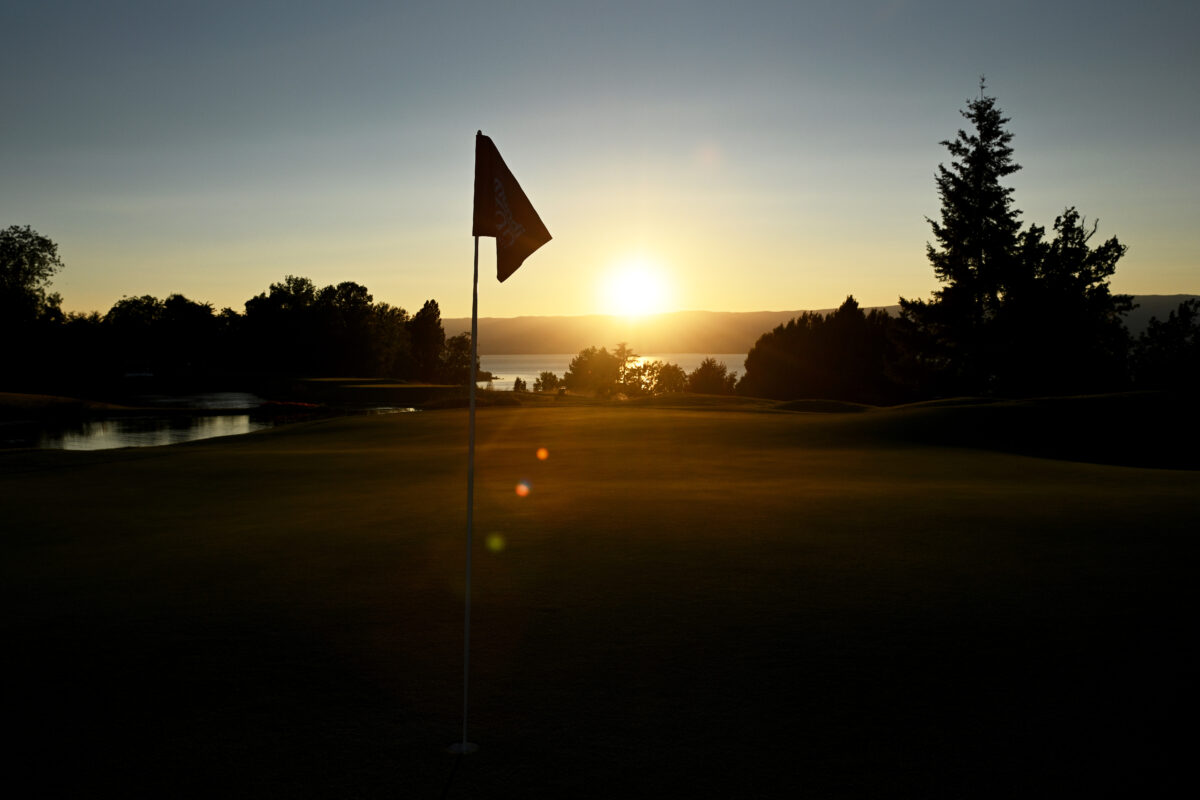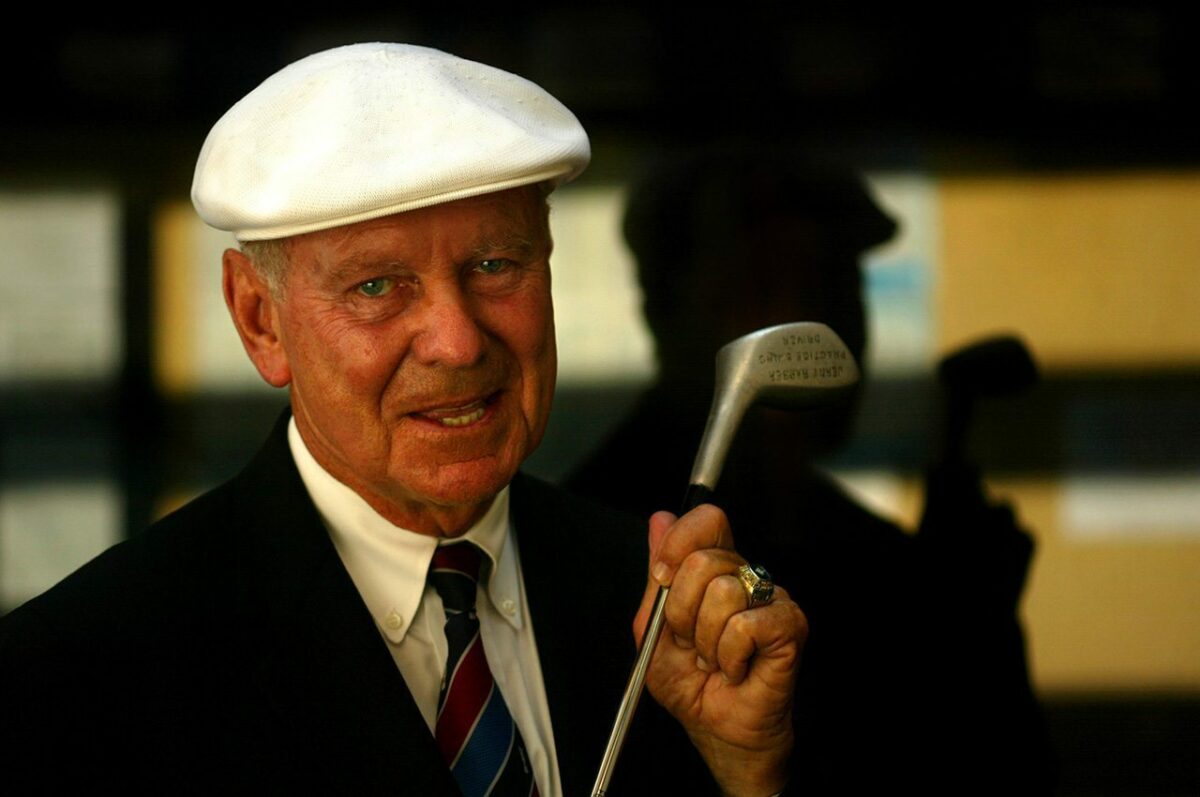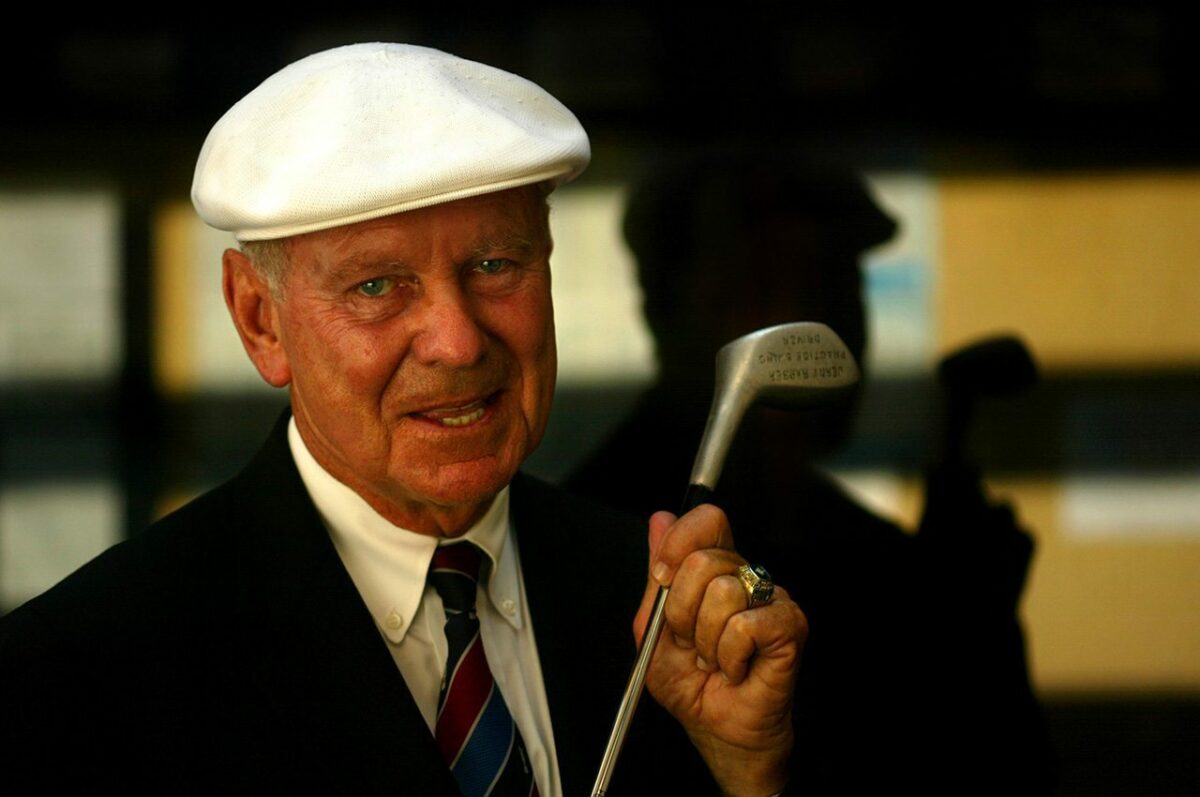Word that Eddie Merrins had died on Thanksgiving Eve hit me like a cold bucket of water as I gathered in the kitchen with family and monitored the making of the next day’s feast.
Merrins, who died at 91 in Los Angeles, was one of golf’s most respected professionals, a championship-winning coach at UCLA, a beloved figure and an institution at Bel-Air Country Club. In recent years, as pro emeritus, he could still be found there impeccably dressed in a coat and tie and white-knit tam o’shanter, ready to impart his wisdom to another golfer desperate for help.
I had the privilege of writing a story for the 2013 U.S. Open preview issue on the 5-foot-7 Merrins, affectionately known as The Little Pro, and it was the start of a beautiful friendship. Without fail, he’d seek me out at every Masters, U.S. Open and PGA Championship he attended – add me to the list who received an impromptu lesson from Merrins, who advised me to start my swing in New York, flow through Chicago on the way to Los Angeles. I’d be called to the front desk of the media center at the Masters or come back to my desk and find a note that I could come to find him setting up shop on the range. One year, I dressed to the nines in a tuxedo for the Ben Hogan Award as his guest at the ceremony held annually on the Monday of the PGA Tour stop at Colonial. He’d often welcome me to Bel-Air for a get-together when I was in town for Riviera, including one time when he walked all 18 as I played.
We last spoke on June 9 and I could tell his health had deteriorated and his son, Michael, who was often by his side during his travels, complained that he wasn’t getting the care he needed. We made plans to meet up at the U.S. Open but it never came to be. Little Pro kept his word and made it to the course for the final round but I was out on the sixth tee watching Rory McIlroy play. Ten minutes later, I texted him and his son that I’d be back at the media center shortly but we never connected. Regrets, I have a few.
After getting home from the holidays, I dug up my copy from that Merion story and I’m borrowing liberally from it here because it tells the story about how for more than five decades, Merrins gave lessons to everyone from Bing Crosby to Arnold Palmer to Celine Dion and Rickie Fowler to a fellow groomsman at a wedding as the bride walked down the aisle.
“He said he was having a problem with his balance,” Merrins recalled. “What was I supposed to do?”
The man was born to teach, or so he discovered at Merion Golf Club, where he competed in the 1971 Open, and more importantly, the place his life as a teaching pro took shape.
“The discoveries I made there are still the bedrock of my teaching philosophy today,” he said in 2013.
How he arrived at Merion is a story in itself. At 24, Merrins turned pro on the eve of the Lake Charles (Louisiana) Invitational in April 1957, and cashed a check for $250. Next he qualified for the U.S. Open at Inverness Golf Club. Off Merrins went to Ohio to pursue the life of a touring pro. Or so he thought, until one night, prior to the U.S. Open, when he bellied up to the hotel bar and the direction of his life was altered.
Tommy Bolt and Walter Hagen delivered a rookie indoctrination he’d never forget, but it was another conversation with Ed Carter, who ran the PGA Tour at the time, that would shape his future. Carter informed the diminutive Merrins that Merion was seeking an assistant pro whose primary responsibility would be to play with the members. As Merrins put it, “I was looking for a job to support my habit, which was golf.”
Intrigued by the opportunity, Merrins dashed off to Philadelphia for an interview after missing the cut. There he met Francis Sullivan, the former state district attorney and personal attorney for Ben Hogan, who became a surrogate father to Merrins and later godfather to his son, Michael. Sullivan served on the board that hired Merrins on the spot.
So did Jacques Houdry, who coined Merrins’s nickname, “The Little Pro.” Houdry served as best man when Merrins wed Lisa, his bride of more than 50 years in a 1961 ceremony held in New York City. Need more evidence that the Merion members adopted him as one of their own? Consider this: “We had our wedding reception at the old Park Lane Hotel and a whole train carload of people from Merion came along,” Merrins remembered.
From 1957 until 1960, he played regularly with Guy Bates, the club champion, Andrew Davis, who once recorded 10 threes in a row at Merion, and A. Ross Crane, a Philadelphia dentist who told Merrins he might not be the best in town but he was the most expensive. He never charged Merrins a cent.
Architecturally, Merrins called Merion the finest golf course he’d ever seen.
“It’s a masterpiece,” he said. “I remember the two reigning architects of the day were Robert Trent Jones Sr. and Dick Wilson and both of them would walk around Merion all the time just to get ideas, to get visions to use in their design work.”
Merion shaped Merrins into the pro he would become. He had a passion for the game but not a love and respect for it until he spent time there, he said.
Merrins had turned pro to play the game. But at Merion, Merrins was required to teach and discovered he was a teacher at heart. His exploration of the swing happened on Merion’s lesson tee. It’s where he formed the basis for his instructional book and (later video) titled, “Swing the Handle.”
Merrins spent the winter of 1959 under the guidance of Claude Harmon at Thunderbird Golf Club, then left Merion in 1960 to become the head professional at Rockaway Hunt Club in Cedarhurst, New York, where he replaced Dave Marr.
Merrins was living the life of “an itinerant preacher.” He quit the Tour in 1962 to take the head pro job at Bel-Air, and so began a life of service.
“Being a pro golfer means caring about yourself,” Merrins said. “It seemed like a selfish existence to me. I wanted to do more.”
So Merrins spent a lifetime spreading the gospel of golf, even when it meant demonstrating the top of the backswing with an umbrella in an airport, adjusting a grip during an earthquake, or fixing a groomsman’s balance at the altar. The Little Pro, by way of Merion, always had a cure for the common swing.
[lawrence-auto-related count=3 category=1375]



